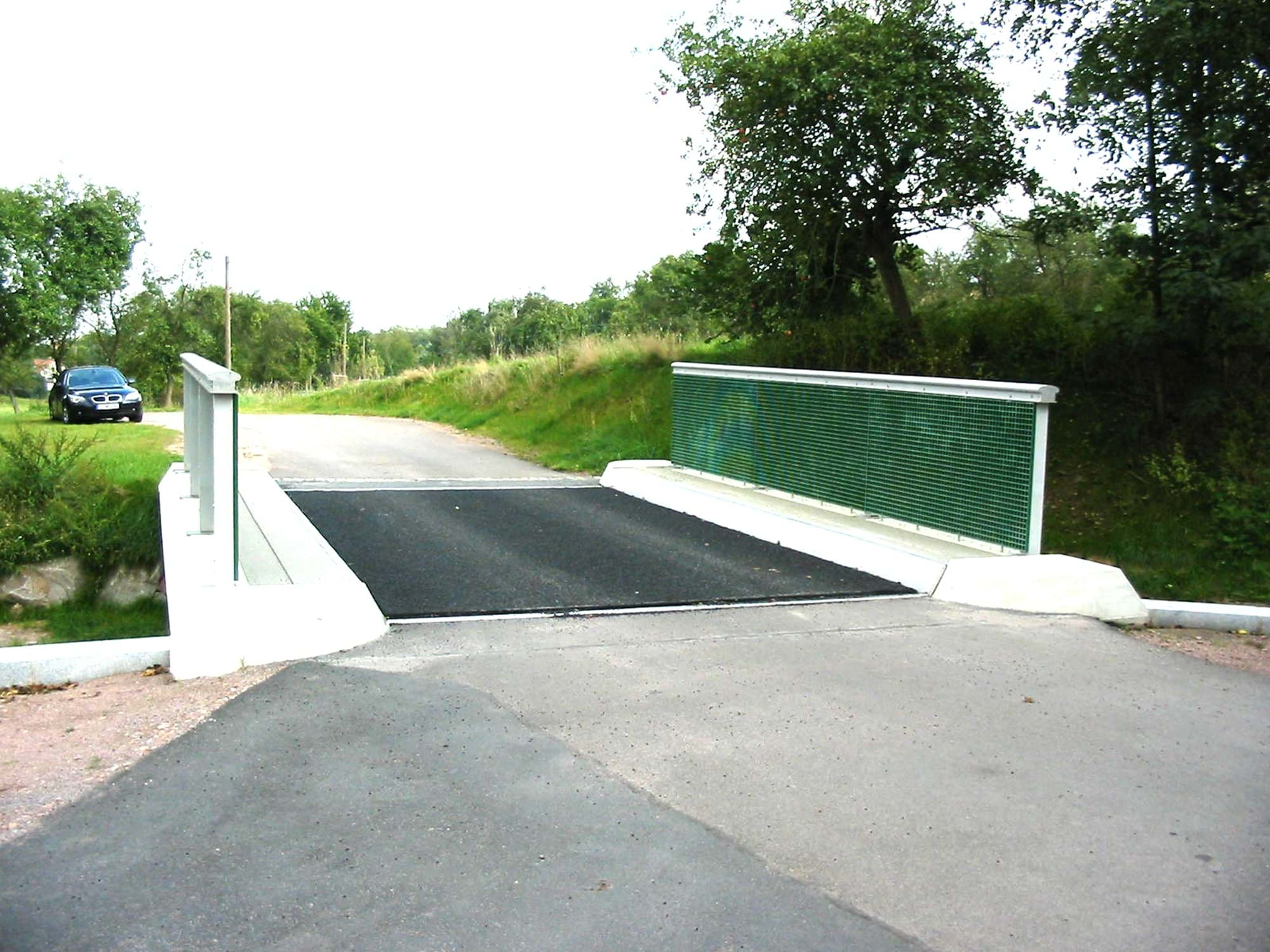

Fiberline Building Profiles A/S
Fiberglass bridge deck and structural profiles
GRP composite - more widely known as glass fibre - can become the building material of the future for lightweight, low-maintenance bridges. This was recently demonstrated in Germany where the municipal authorities in Klipphausen near Dresden opted to implement an innovative solution for a new bridge project. The bridge - the first composite road bridge on the European mainland - was constructed by Fiberline of Middelfart, Denmark.
Composite is remarkable for having the same load-carrying capacity as steel or concrete, and can usefully replace conventional bridges made of these materials. Technologically, the Klipphausen bridge ranks among the most advanced in Europe.
The municipal authorities in Klipphausen had previously obtained positive results with GRP composite when building cycle and footbridges to replace those destroyed by the severe floods that swamped large parts of the Dresden area in 2002. The authorities therefore decided to go a step further by constructing the first composite road bridge.
The decisive factors in the choice of GRP composite as the construction material was its strength and lightness combined with faster installation time. Another factor behind the authorities’ decision to install a bridge from Fiberline was reduced maintenance due to GRP’s high level of resistance to road salt, rain and frost.
In many cases, bridges are required to be installed as fast as possible in order to minimise disruption to traffic. GRP has tremendous advantages in this respect because its low weight means it can be assembled in advance and then craned into place.
The Klipphausen road bridge was delivered in two sections and glued together on site. It was then mounted on its cast concrete foundations and bolted together. Bridge removal if high water threatens is similarly easy, enabling Klipphausen to protect its investment in case of future floods.